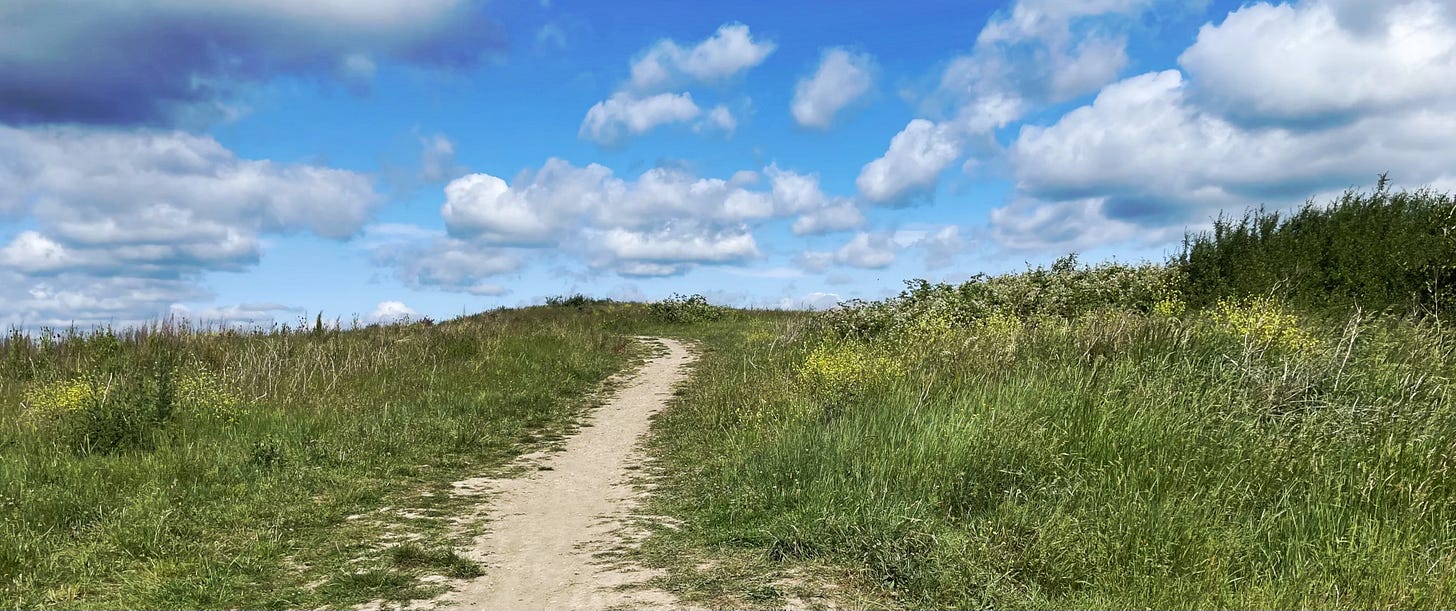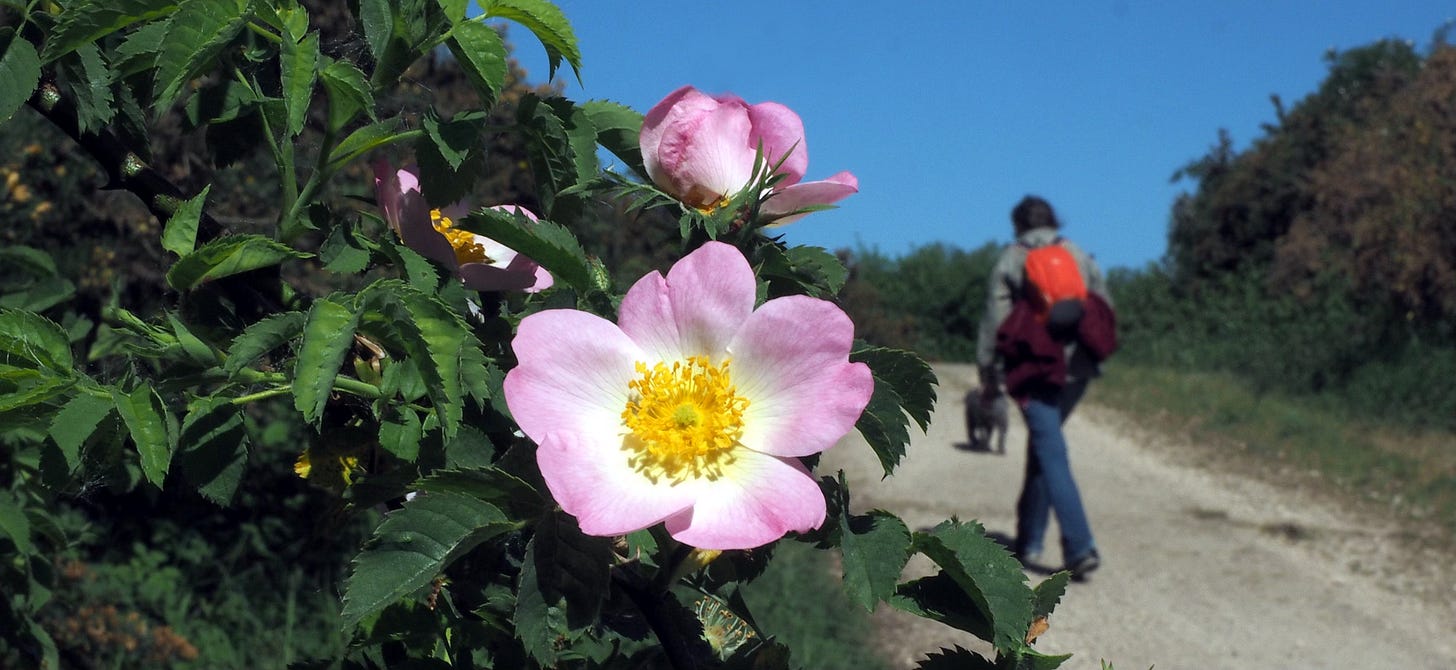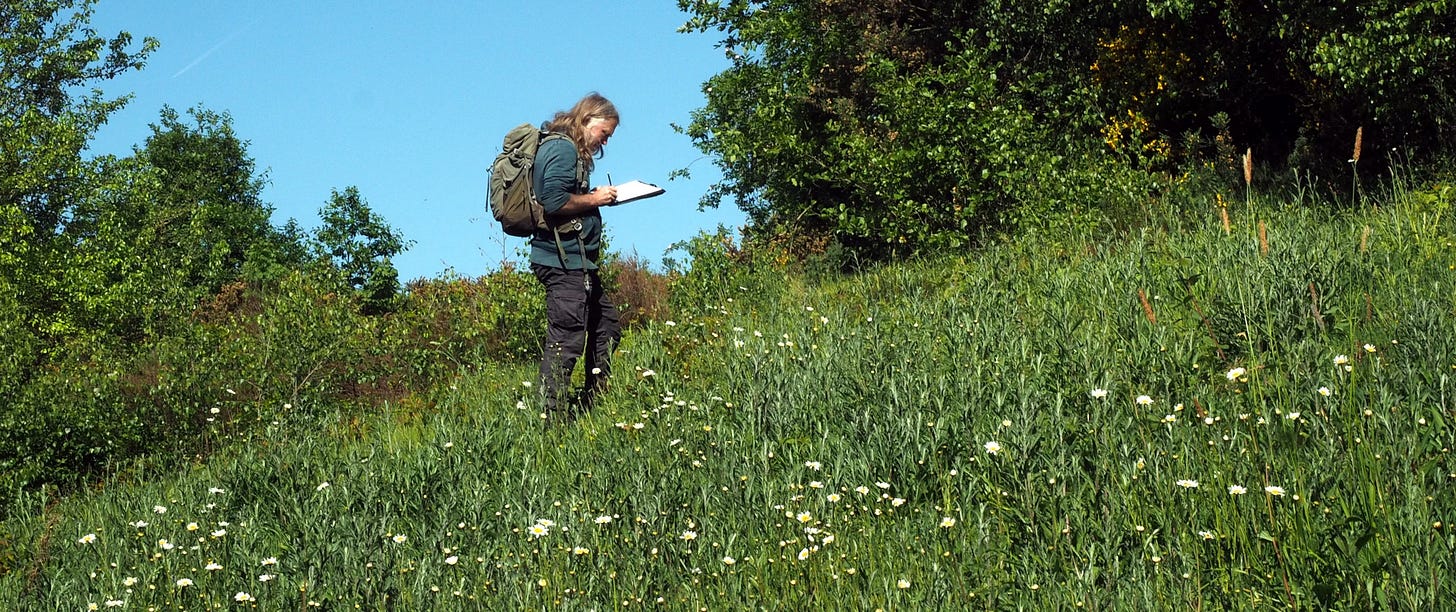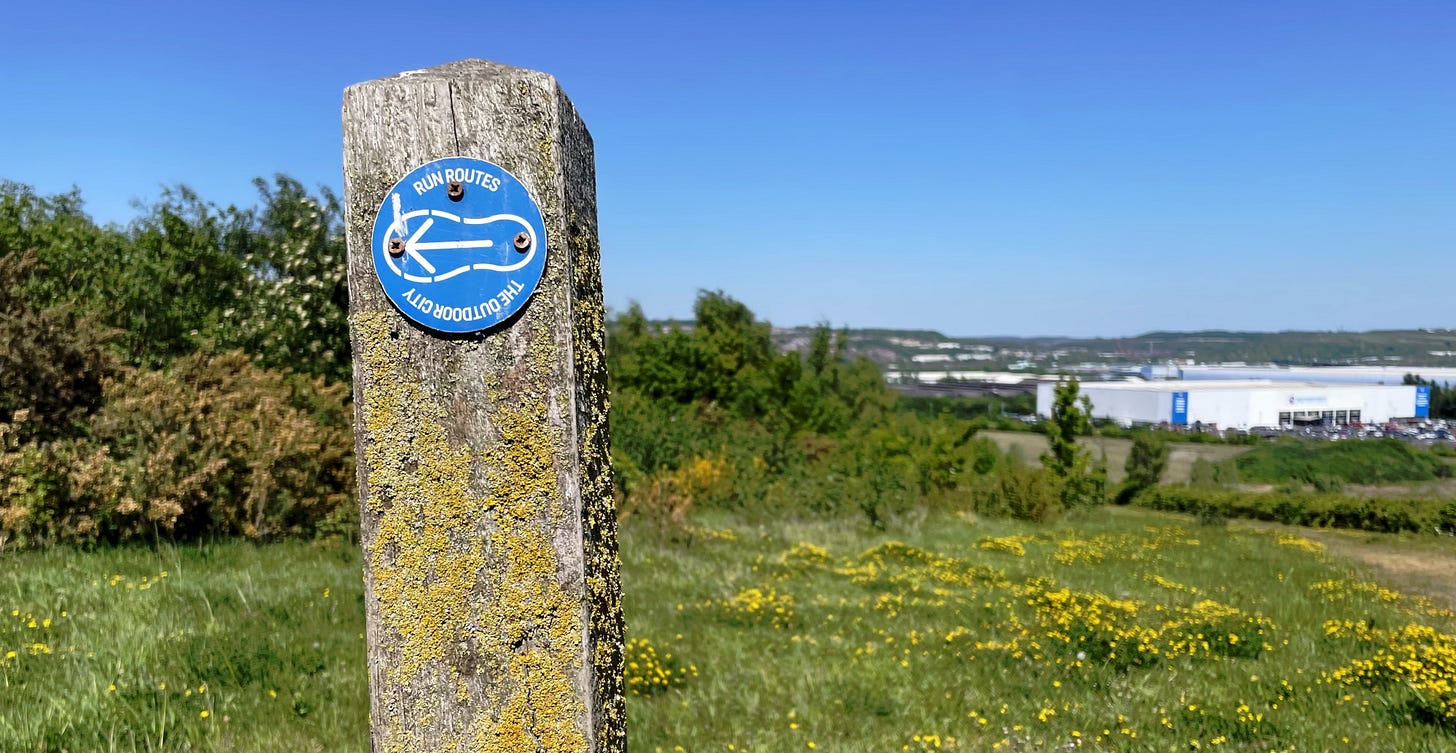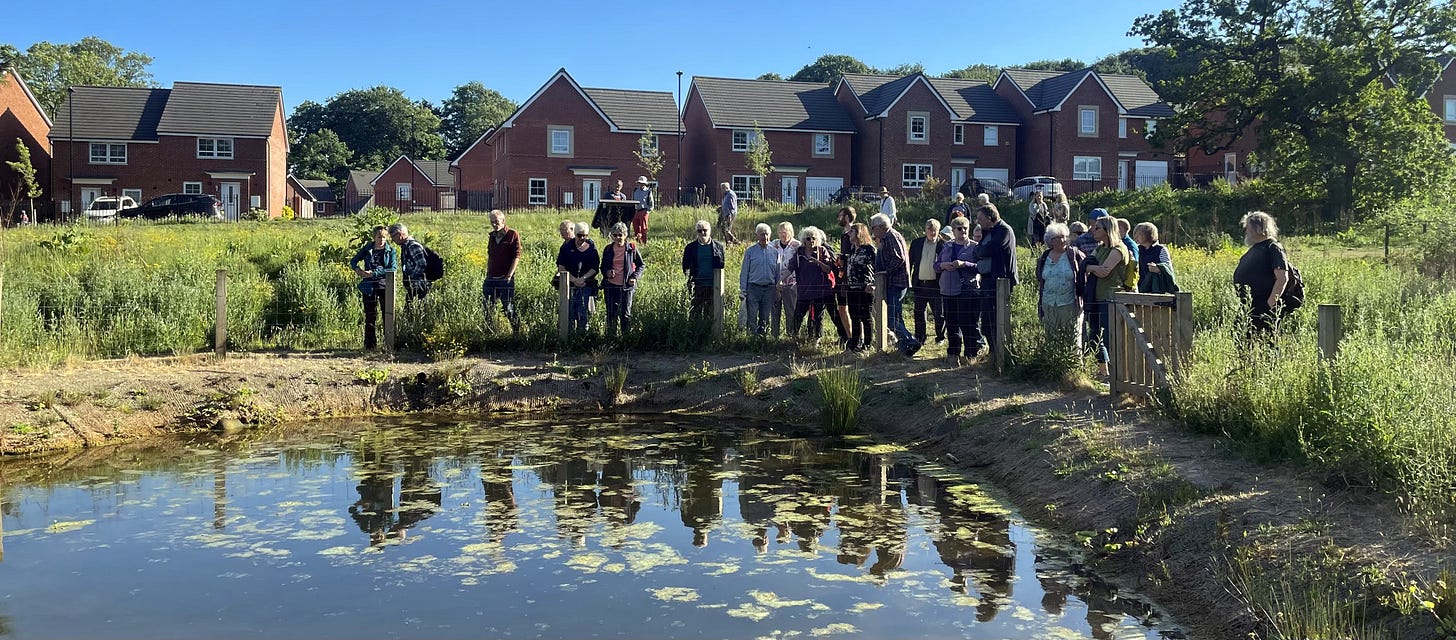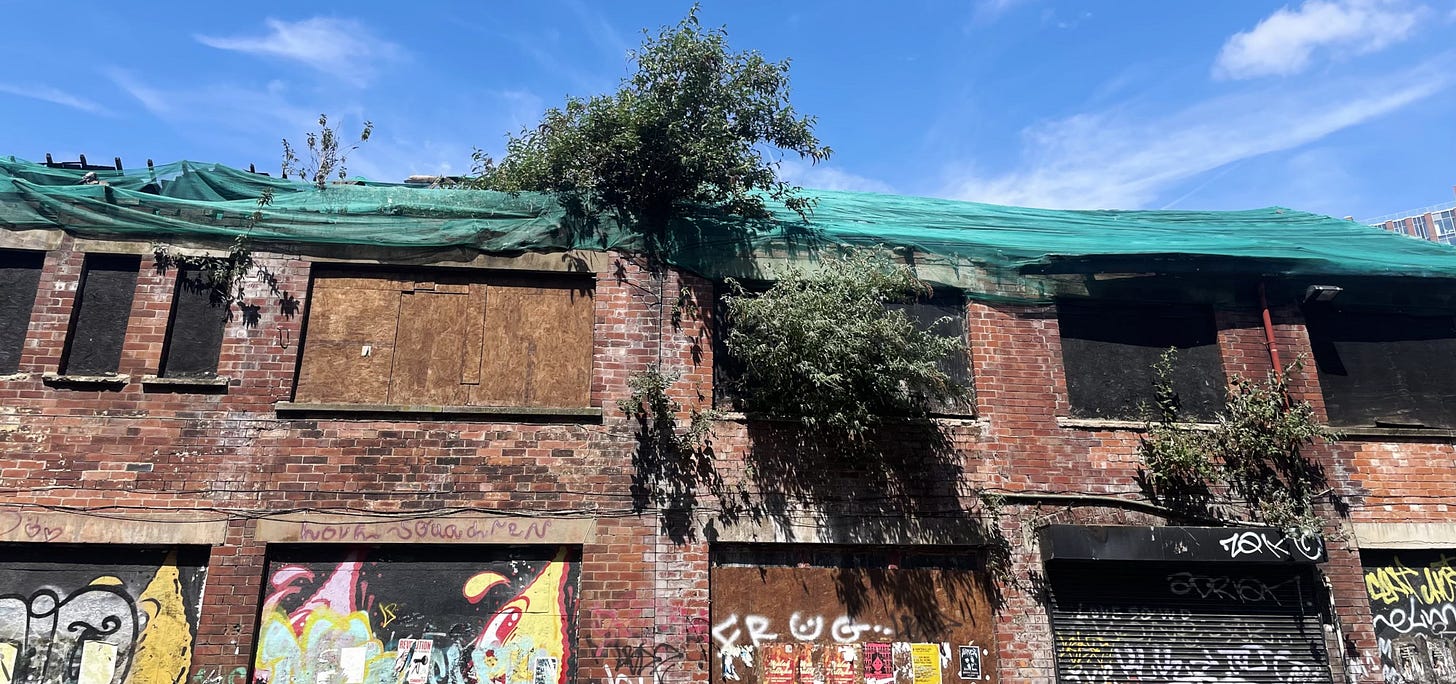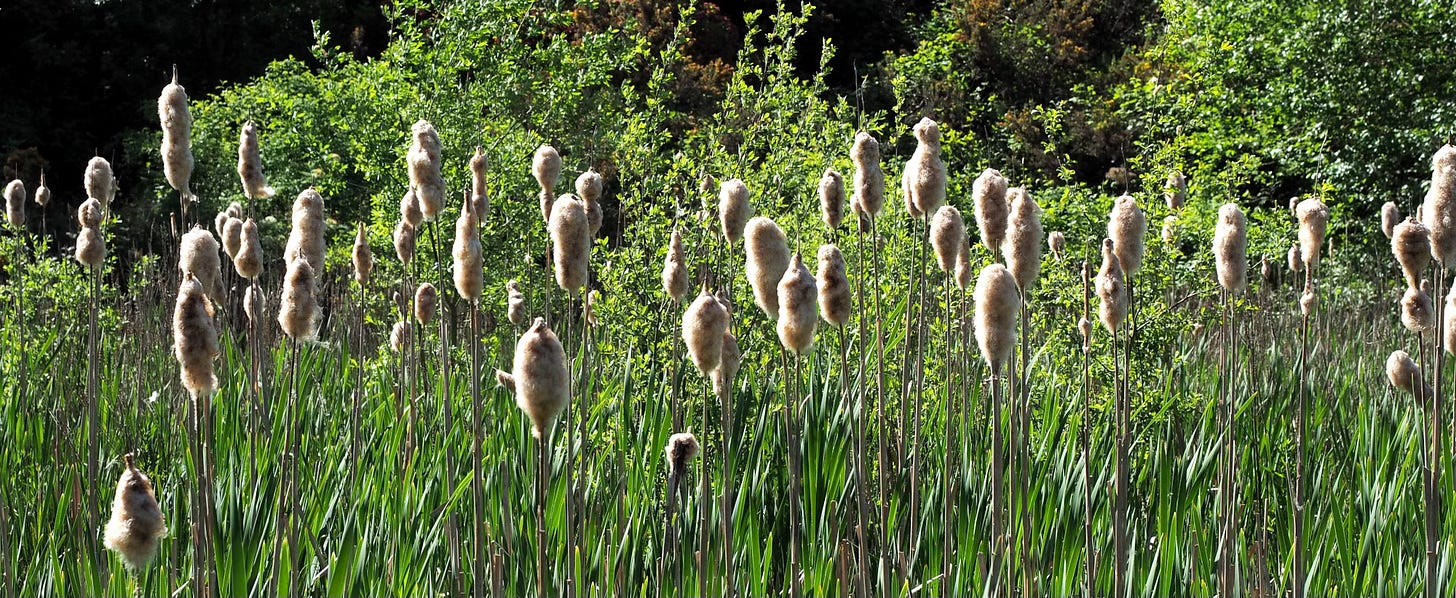Sunday at Bill's Mother's: 22nd June 2025
A wild issue. Urban burgeoning, returning beavers, 70 Acre Hill and remembering wild man of Sheffield, Angus Hunter.
Morning. It’s a wilder than usual issue this week. We have Eurasian Beavers are coming home news, a look at the burgeoning wildlife on an old coal spoil heap, and a few words about the legacy of outspoken local ecologist Angus Hunter, who tragically passed away this year, following a celebration of his rewilding life earlier this week.
And we’re exploring what wild really is, and how wilderness isn’t really wilder.
Thanks to all the new subscribers this week. Every reader is welcome, every subscriber is a little more welcome, and every pocket money paying full subscriber is so welcome I dance round the room when you join the team. We’ve almost 310 wonderful full members so far, and at 380 we’ll have more coverage, more features and a handful of freelances helping us explore our wild city even more. Subscribe or upgrade below.
Out There News in Brief
Beaver Believers - The government has decided to welcome back the once native Eurasian Beaver, after an absence of around 400 years. Escapees from existing closed trial sites are already spreading, but I hear we should have a shortlist of official local reintroduction sites in Sheffield, Barnsley and maybe Rotherham by early autumn.
After assessments over the summer, a long list will be whittled down to around half a dozen places where one or two beaver pairs will set up a new home in South Yorkshire. A series of sites is needed, in case the animals need moving, or if we get the green light for several new South Yorkshire beaver families.
My contacts won’t be drawn on when the long-missed furry flood management engineers will actually arrive, but: “It can’t happen soon enough,” they told me.
Angus Hunter - I met city council ecologist Angus Hunter many times around the damper patches of Sheffield. A lover of wetlands and amphibians, he’d patiently explain that if we (and our politicians) didn’t make the right choices soon, the nature emergency was going to get very real for all of us.
Angus died earlier this year, and I hope to have a feature on him and his work soon. But I wanted to share a fundraiser (https://www.justgiving.com/crowdfunding/ecology-for-angus) set up by his colleagues for local projects he supported, after a celebration of his life with friends, family and colleagues at Ecclesall Woods this week.
The day after he died, the government announced they were (finally) authorising the wild release of Eurasian Beavers, for which he’d been clamouring with growing impatience for years. Angus was “instrumental in that decision,” said the celebrant on Friday, so when they eventually arrive, make sure you remember the wild man of Sheffield who helped make it happen.
Spoil Tips
I’m on an old spoil heap high above the retail sheds of Darnall. It’s beautiful.
“Black Knapweed,” says city ecologist Ziggy Senkans. “Ox-eye Daisies. Ladies Bedstraw. Sweet Vernal Grass. Look, there’s a Buzzard going over.”
Ziggy and colleague Belinda Wiggs are checking the species lists at 70 Acre Hill, one of the city’s Local Wildlife Sites. In this case, the little-known park was landscaped over 30 years ago after a previous life as the spoil heap for nearby coal pits.
So we have young trees, gritty soil, lots of flowery meadows, and all the insects and wildlife that live in them. “Grasshoppers. Red Damselfly. Meadow Vetchling.”
I gather the 70 acres in question once also included the land around the grand house in nearby High Hazels park, now the local golf clubhouse. The paths spread across the hillside to look out over the grassy runways of the rewilding Sheffield airport. Lapwings forage near the runways, and Skylarks sing in the skies above.
The young woodlands are still fenced against roaming deer, but many of the trees are now probably big enough to survive deer attacks, says Ziggy. Three ponds were included in the landscaping, back in the days when enough rain was expected in winter and spring to fill them up.
They’ve been invaded by New Zealand pygmyweed, or Crassula, but the furry native Bulrushes are doing well (“like something out of Alien”, says Ziggy). However, the ground is dry and the handful of tadpoles we see (a month ago) are struggling.
The ecologists seem fairly relaxed about some of the invasive alien plants. Many still provide shelter, or food or cover for a variety of local creatures.
It’s a nice mosaic of habitats, says Belinda, which means a mixture of species can thrive alongside each other. There was some planting to start with, but then birds and insects fly in to take advantage, and seeds blow in to take root.
Some ongoing management would be helpful, the ecologists say, not least for the ponds, and back when the council had a sizeable ranger team they could be the eyes on the ground for the city’s many green and blue spaces. But for now, nature is still doing its work, turning the old coal heap green and buzzing and singing.
“Quaking Grass,” says Ziggy. “A Dingy Skipper. Silverweed. Holly Blue. Sneezewort.”
Wild Ambitions
Then more I talk to wilders and ambitious ecologists, the more the subject turns to hallucinogenic mushrooms. Sheffield University are among learned institutions researching how magical local fungi can offer a cheap and highly effective treatment for anxiety and depression, for example.
After sharing the whereabouts of obscenely shaped growths in local woods and meadows, these wild scientists tell me how we’ve only just started learning how fungal filaments carry messages for the world’s plant kingdoms, and store carbon for our emissions targets.
How many diseases could be treated or prevented by substances like these in the wild world we’ve not yet discovered, they ask.
And if we thought again about chemically-blitzed and sterile farmland on the city borders, alongside the chaotic ecosystems turning old factory sites and ski villages into wildlife wonderlands, how might we rethink our green belt?
There was much that was mind-boggling in the recent What Is Wild conference hosted by South Yorkshire Biodiversity Research Group (SYBRG) and the Landscape Conservation Forum in May.
Organisers are still beavering away to make sense of it all for the lay reader, but after a few brief chats with Christine Handley and Professor Ian Rotherham from SYBRG, and seeing the vexed balance of wildness and wasteland everywhere I go across the Outdoor City, I’ll try to make a bit more sense of it here. And you should know that no special mushrooms were harmed during the writing of this feature.
Wild Words : If we say rewild, what are we rewilding to, since nature is usually in a constant state of flux? And what do the words forest, and wilderness mean to you? In England, a forest originally meant an aristocratic hunting ground, from which most of us were excluded. Maybe it had trees, or maybe not. And given nowhere on earth is now free from human tainting, where is the inhospitable wilderness where people are outcasts?
We might imagine some places as wild and untamed, and see them as romantic wilderness waiting for intrepid humans to explore. Yellowstone, the world’s first national park in 1872, was seen this way.
But the original Americans had been living and working with the plants and animals there for thousands of years. And the popular wilderness of the Australian outback has been influenced by humans for 60,000 years or more.
Wild Times : Using archaeology and talking to locals tells us how wild spaces were used in the past. And how those users worked with old knowledge of plants and animals. Old coppiced trees are all over our woodlands, and the woodworkers of centuries ago could use the ability of Rowan, Hazel, Willow and many other native trees to regrow after you’ve lopped off several branches. And the trees learned to do that because they were forever getting gnawed down by the thousands of Eurasian Beavers who lived among them for millennia (see above).
Long ago, a succession of big beasts (soon hunted out of existence once we arrived) like rhinos and giant cattle periodically blundered around felling acres of woodland. A wildflower glade would burgeon in their wake. Hence the seed banks in our woodlands, waiting for a rhino or a bit of human tree felling to get going again.
But times are shortening, and change is quickening. Elders today remember insect splattered spectacles every summer, Swifts and Swallows everywhere, healthy Ash Trees, and enough public service staff to make the best of current ecological knowledge. The conference mentioned shifting baseline syndrome: today’s twenty and thirty year olds know and expect none of these things, but really they should.
Urban Wild: Cities are places where rivers meet, planes land, trains arrive, and people and fashions come and go. And they’re built upwards, like rocks and cliffs. All of this brings in new and strange interactions of plants and animals. Falcons and gulls come to live here now the nation’s sea cliffs are busy with humans, and losing fish. Seeds waft along train lines, or arrive on boots or packing crates. Humans breathe, and snort and sneeze, spreading the world’s most successful life forms, the bacteria.
Life thrives given the means to do so, we learned at the conference, and these urban interactions lead to new, or novel, ecologies. Buddleia, originally from China, has been colonising urban walls and trashed buildings for over 100 years, and Red Admiral and Tortoiseshell butterflies love it.
The plant life in urban areas is usually far more diverse than the nearby countryside, influenced by thousands of vertical places to grow, and even different soil types formed from building rubble and grit. Some invaders get carried away, like Japanese Knotweed, Himalayan Balsam, Rhododendron Ponticum and more recently Three Cornered Leek, which threatens Bluebells. Life is complicated like that, we were told.
Wild Choices: There’s talk that the generations of tidy green spaces are passing. That shifting baseline expectations, the nature emergency and municipal efficiency will see wildflower meadows on every roadside and traffic island, and surrounding the sports fields in every park.
Recognising that humans are actually part of all that wildness ready to get on with life around us is one of the choices approaching us, like returning beavers, lynx and in time, maybe even wolves.
We can’t feasibly wipe out all invasive species, so we need to pick and choose and make a plan. Every green and blue space in the city should have such a plan, professional conservationists and local park lovers keep telling me. And those locals always need consulting, because they know what’s happening in the wild places on their doorsteps, and how they can work with the natives and invaders they know.
But nature is never static, even if you spend a fortune and bludgeon the bits you don’t like into submission. For a flourishing wild space, you need a plan to nurture complexity and diversity, which gives it strength to face a future of harsh weather and biodiversity crises.
All ecologists know the world ecology as a jet plane analogy, coined by US ecologist Paul Ehrlich. Every species is a rivet on a jet plane, he fancied, and every lost species is like a lost rivet. The world ecosystem / plane can carry on only so long, until the final key rivet dies out, and the plane / world falls into oblivion.
The wild life out there is a lot more powerful and creative than that, suggested some of the What Is Wild speakers. Some of those rivets are disappearing at an alarming rate, but others are finding new places, old rivets are being strengthened and maybe new rivets are being built until the whole analogy crashes out of the sky, and we give the wild world the credit it deserves.
More What’s On Out There (from Sunday 15th June)
A tiny selection from our new (and regularly updated) What’s On Out There news and listings post for June and beyond.
Sun 22nd - Midsummer Festival - huge celebration of creativity & community for families with RivelinCo at Hillsborough Park. (Migration Matters Festival)
Mon 23rd - Wardsend Cemetery Bird Survey
Tues 24th - Friends of Ecclesall Woods volunteer & footpath repair session
Weds 25th - Sheffield CTC Cycle Ride - Infamous Longest Way (206km) Ride to Cleethorpes
Thurs 26th - SRWT Volunteering - Sunnybank
Fri 27th - Creative Nature Workshop - exploration of connections to nature at Samuel Worth Chapel, creating a group installation. (Migration Matters Festival)
Sat 28th - Parkwood Springs conservation volunteering
Sat 28th - Shire Brook Valley - Volunteer Session
Sat 28th - Garden Gremlins - stay-and-play creativity for under 5s at The Montgomery, adapted from an outdoor environment. (Children's Mini Mig Mat festival).
Sunday at Bill’s Mother’s arrives for you every week thanks to over 300+ paying full subscribers who help cover our costs. But we need to grow to 380 full subscribers to really get going, with more features and more freelance contributors.
Reader-support is the only way to make local journalism happen. Please share this post with your mates, and do take out a free trial for a few weeks if you’ve not read our posts before. But if you like what you read, please help us grow to the kind of out there publishing social enterprise our city could do with just now by becoming a paid up supporter, for the cost of a few Wimbledon strawberries.




